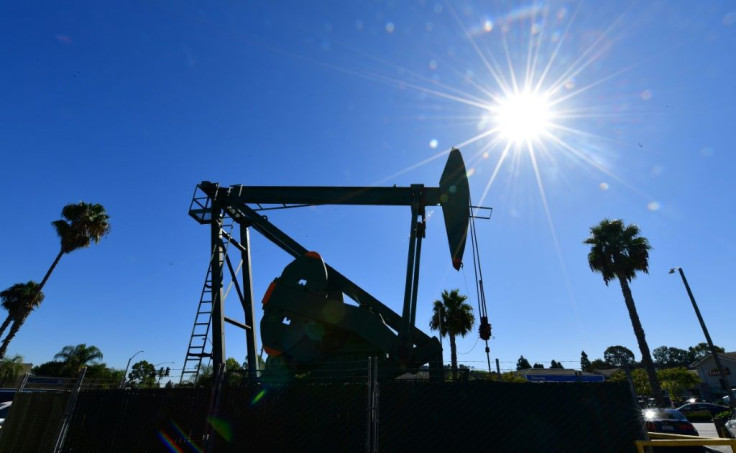How Can Oil Prices Be Negative?

While a fall in oil prices is hardly a surprise after coronavirus lockdowns hit demand just as producers had hiked production in a war for market share, how could they go negative?
Many no doubt thought there had been a glitch when the May futures contract for US benchmark West Texas Intermediate (WTI) closed Monday in New York at -$37.63.
So crude oil producers were willing to pay someone to take the product off their hands.
How could this happen?
The May WTI contract plunged as the contract expires on Tuesday when the owner of the contract is technically supposed to take delivery of the crude.
And that is the problem: The oil storage terminal in Cushing, Oklahoma where WTI is delivered is nearly full given the ample US production and refineries slowing their output as gasoline demand drops.
Meanwhile, pipeline capacity to get it out is limited.
"The oil price reflects the economic value of oil less than the cost of storing oil," said Stephen Innes, Chief Global Market Strategist at AxiCorp.
"As WTI requires physical delivery and storage is very expensive to access, the cost of storage in May exceeded the economic value of oil in May."
Thus traders were ready to pay others to take it off their hands.
Other US oil contracts have also turned negative recently as storage options run out.
The crash also called attention to the fact that most oil trading is in futures, not physical barrels of oil.
With a such a contract the delivery of the commodity is carried out at a later date.
Futures trading help market participants by allowing them to lock into prices, either to sell or buy, but also allows for speculation.
Those who speculate on oil futures and never want to hold it had to get out of the WTI May contract before it expires on Tuesday, adding to the downward pressure.
It is instructive to look at the June WTI contract, which has also been falling, but was going for around $16.60 in afternoon European trading on Tuesday.
The major international benchmark, Brent, is already trading on June. It held around $20 on Tuesday but this is also considerably lower than even in recent days.
Holders of these contracts won't need to accept delivery until June, when many hope demand for gasoline and jet fuel to pick up as countries ease their lockdowns.
But that is just an expectation, and much will also depend on what oil producers do.
The OPEC oil cartel and a number of other major producing nations have agreed to cut daily output by 10 million barrels per day in May.
Some analysts believe demand has dropped by 30 million barrels per day, meaning output could continue to outstrip demand.
"So, unless there is some type of coordinated intervention, June could become worthless as well," said Innes.
© Copyright AFP 2024. All rights reserved.




















